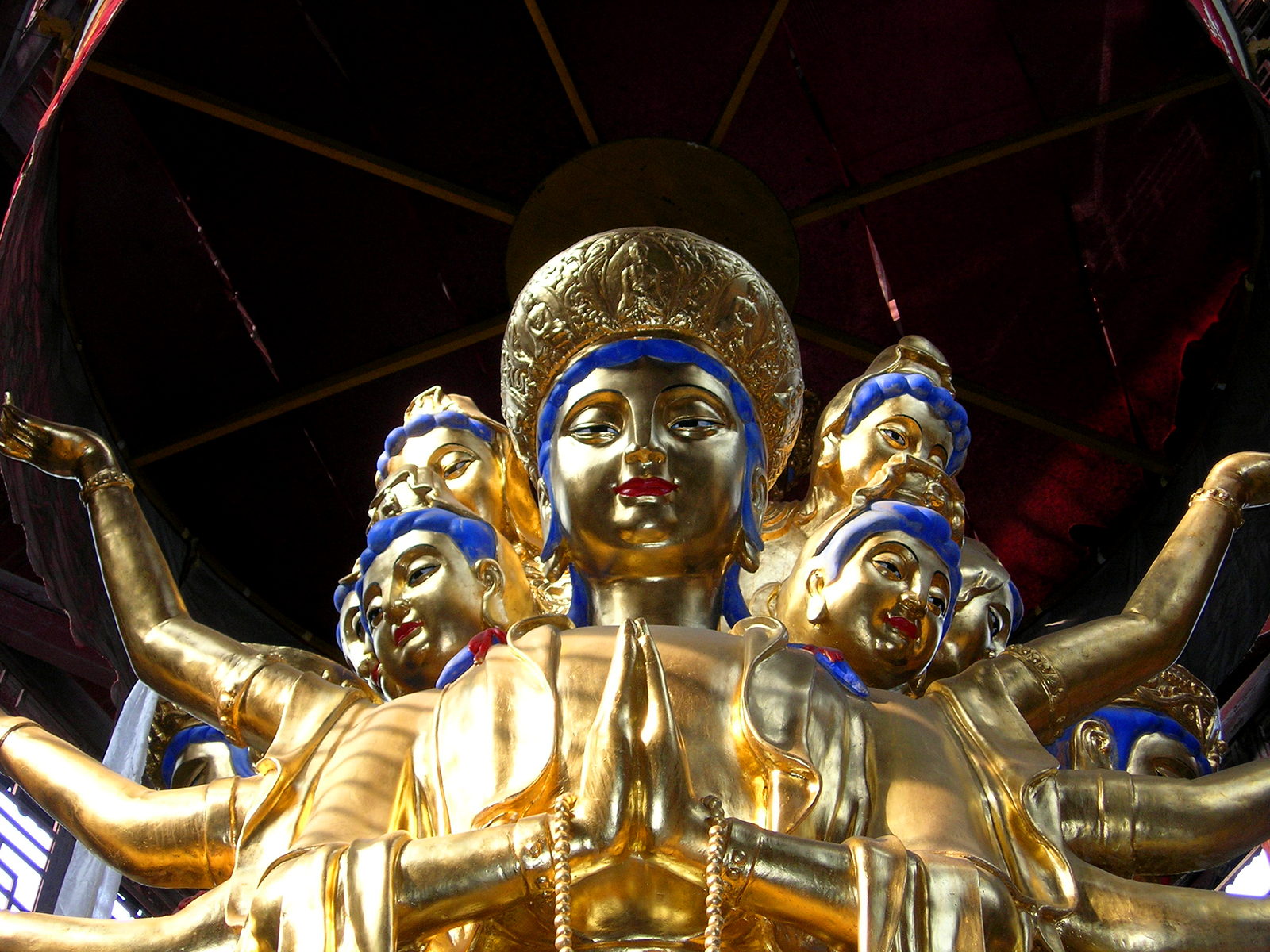
A “Thousand Hand Buddha” is in the Oriental Buddha Park, which is adjacent to the Leshan Giant Buddha. This park showcases various Buddhist statues built in different styles.
1) The Oriental Buddha Park, opened in 1994, is described as a “massive religio-cultural theme park” that displays a variety of Buddhist statues in different styles, representing Buddhism from various Asian countries.
2) One of the statues in this park is mentioned as “The Thousand Hand Buddha, built in a Hindu influenced style”. This is likely the statue you’re referring to, but it’s not described as golden in the provided information.
3) It’s worth noting that thousand-armed depictions of Buddha or Bodhisattvas (particularly Avalokiteshvara) are common in Buddhist iconography, symbolizing the ability to help all sentient beings simultaneously.
4) The Leshan area is known for its rich Buddhist heritage, with numerous temples and statues beyond just the famous Giant Buddha.
Qiān Shǒu Guānyīn (千手观音) refers to the Thousand-Armed Guanyin, a popular representation of the bodhisattva Avalokitesvara in Chinese Buddhism. Here are some key points about this iconic figure:
1) Meaning: The name translates to “Thousand-Hand Guanyin” in English. Guanyin is the Chinese name for Avalokitesvara, the bodhisattva of compassion.
2) Iconography: This form of Guanyin is depicted with multiple arms, usually 1000, symbolizing the ability to reach out and help all sentient beings simultaneously. Each hand typically has an eye in its palm, representing the all-seeing nature of compassion.
3) Origin: The story of the Thousand-Armed Guanyin is linked to a Chinese legend about Princess Miaoshan, who sacrificed her eyes and arms to cure her father’s illness. Her father, moved by her sacrifice, ordered a statue made of her with “intact arms and eyes” (quánshǒu-quányǎn 全手全眼), which was misheard as “thousand arms and eyes” (qiānshǒu-qiānyǎn 千手千眼).
4) Symbolism: The multiple arms represent Guanyin’s great compassion and ability to help many beings at once. The eyes in each palm symbolize the bodhisattva’s all-seeing wisdom.
5) Worship: Thousand-Armed Guanyin is widely venerated across East Asia, particularly in China, Japan, and Korea. Devotees pray to this form of Guanyin for protection, compassion, and aid in times of difficulty.
6) Cultural impact: This representation of Guanyin has inspired various art forms, including sculptures, paintings, and even dance performances. The “Thousand-Hand Guanyin Dance” is a famous Chinese dance that attempts to recreate the visual effect of the multiple-armed deity.
7) Buddhist philosophy: In Buddhism, this form of Guanyin embodies the concept of skillful means (upaya), using various methods to help beings according to their individual needs and capacities.
While not specifically related to the Leshan Buddha, the Thousand-Armed Guanyin is an important figure in Chinese Buddhism and culture, representing the vast reach of compassion and the multifaceted nature of Buddhist practice.
